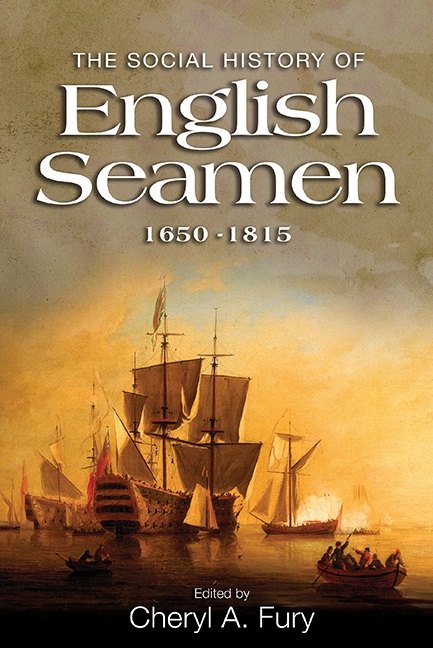Book contents
- Frontmatter
- Dedication
- Epigraph
- Contents
- List of illustrations
- List of contributors
- List of abbreviations
- Introduction
- 1 The Development of Sea Power, 1649–1815
- 2 Naval Seamen, 1650–1700
- 3 Officers and Men of the Navy, 1660–1815
- 4 The Impact of Warfare on Naval Wives and Women
- 5 Officers, Shipboard Boys and Courts Martial for Sodomy and Indecency in the Georgian Navy
- 6 Health Provision in the Royal Navy, 1650–1815
- 7 The Origins and Careers of English Merchant Seamen in the Late Seventeenth and Early Eighteenth Centuries
- 8 Private Enterprise, Public Policy and the Development of Britain's Seafaring Workforce, 1650–1815
- 9 Jack Tar's Food: Masculine Self-fashioning in the Age of Sail
- 10 Pirates, Privateers and Buccaneers: The Changing Face of English Piracy from the 1650s to the 1720s
- Conclusion
- Bibliography
- Index
5 - Officers, Shipboard Boys and Courts Martial for Sodomy and Indecency in the Georgian Navy
Published online by Cambridge University Press: 11 August 2017
- Frontmatter
- Dedication
- Epigraph
- Contents
- List of illustrations
- List of contributors
- List of abbreviations
- Introduction
- 1 The Development of Sea Power, 1649–1815
- 2 Naval Seamen, 1650–1700
- 3 Officers and Men of the Navy, 1660–1815
- 4 The Impact of Warfare on Naval Wives and Women
- 5 Officers, Shipboard Boys and Courts Martial for Sodomy and Indecency in the Georgian Navy
- 6 Health Provision in the Royal Navy, 1650–1815
- 7 The Origins and Careers of English Merchant Seamen in the Late Seventeenth and Early Eighteenth Centuries
- 8 Private Enterprise, Public Policy and the Development of Britain's Seafaring Workforce, 1650–1815
- 9 Jack Tar's Food: Masculine Self-fashioning in the Age of Sail
- 10 Pirates, Privateers and Buccaneers: The Changing Face of English Piracy from the 1650s to the 1720s
- Conclusion
- Bibliography
- Index
Summary
The examination of transgenerational homoeroticism in the Royal Navy over most of the eighteenth century and into the early decades of the nineteenth is a difficult business. There is little before the reign of Queen Anne to provide context for such a study. Although the first secular laws against sodomy were passed under Henry VIII, no naval regulation prohibiting anal intercourse appeared until the Restoration, when it was mandated a capital crime. Even then, there is no indication that any prosecutions occurred under the regulation for almost fifty years following its enactment. The earliest record in Admiralty archives of mariners tried for homoerotic indecency dates from 1704. It was not until two years later that the navy convened a court martial for sodomy.1 Transcripts, trial summaries and occasional related documents from over one-third of these courts martial, from the first trials in the early eighteenth century until such prosecutions ended in the 1820s, deal with officers accused of sexual engagements with boys. As is often the case with judicial records of sexual transgressions, the rich trove of information they provide is not without limits. Prosecutions for sodomy or indecency, with their understandable concentration on fondling, penetration and emission, offer few if any substantial clues to the extent or frequency of such practices, nor do they offer much insight into more positive and affective manifestations of human interaction: friendship, love or the avuncular devotion of men to boys. Sexual contacts between officers and youngsters that did not devolve into anger or feelings of exploitation and betrayal rarely came to the attention of the command structure. Men in positions of authority haled before courts of inquiry or courts martial for sodomy or indecency with lads most often faced trial because their youthful partners were bent on revenge for the perceived or actual wrongs they sustained.
In the Georgian navy, officers were classified under three separate headings, commissioned officers, warrant officers and petty officers. The manner of life at sea led by members of these groups varied widely, particularly in the matter of shipboard accommodations.
- Type
- Chapter
- Information
- The Social History of English Seamen, 1650-1815 , pp. 89 - 106Publisher: Boydell & BrewerPrint publication year: 2017

